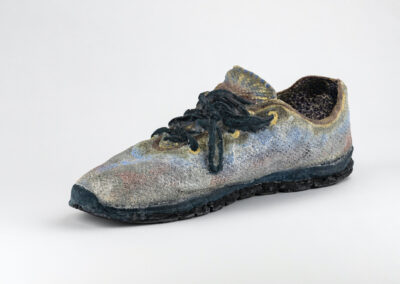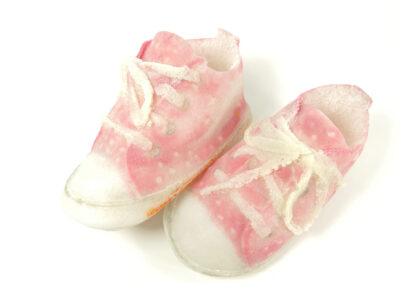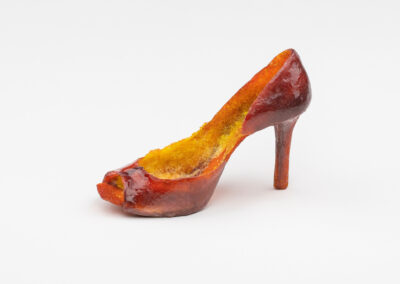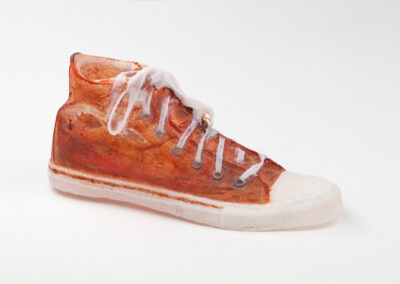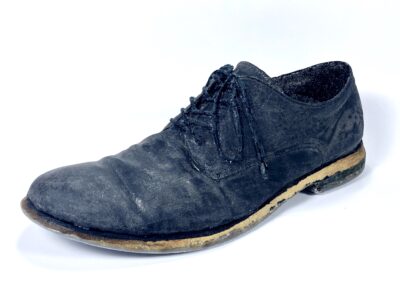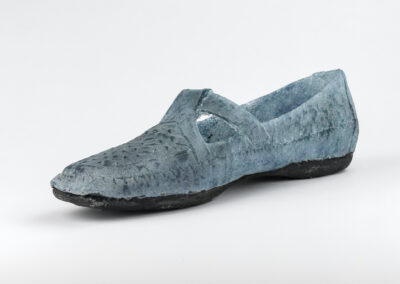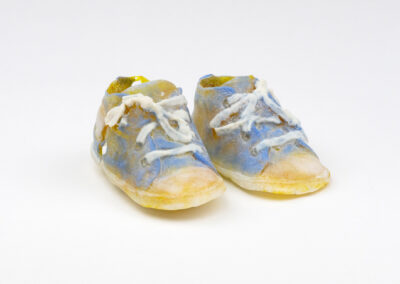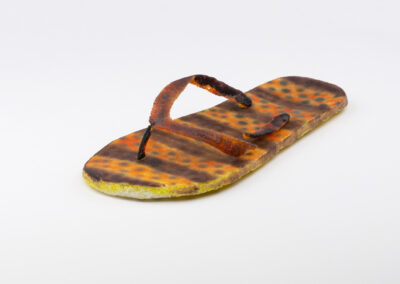Bras of Beauty: Portia Marie York
Shoes as Storytellers: Dori Settles
Curatorial Statement:
The clothes we choose to wear can reveal so much about us whether we are aware of the revelations or unaware of our walking narratives. For as long as humans have worn clothes, the clothes have come packaged in rules and social etiquette about what should or should not be worn, and when or why or even how the clothes we wear should adorn the body. We may profess to be somewhat indifferent – but even indifference is a recognizable style. What we wear and how we wear it can express our political values, our conformity or lack thereof, how we are feeling, what parts of our bodies we are proud of or might be embarrassed by; how confident and comfortable we are in the skin we conceal with our clothes or reveal in peekaboo style; who our friends are, who we wish to alienate or desire to seduce.
The clothes we select each morning to wear is a statement about who we are, who we aspire to be and will influence others’ perceptions whether we intend them to or not. Of course, the adage holds true, “never judge a book by its cover,” but the cover holds the pages together or lets them scatter as they fall out from a broken spine.
Portia Marie York’s Bras of Beauty are a testament to the strength of the women who have survived breast cancer “as well as those currently facing its challenges.” As the artist points out, one in eight women in the United States will be diagnosed with breast cancer during their lifetime. The act of crocheting symbolizes crafting the stitches that hold a life of illness together, finding the threads of beauty to defy both psychological and bodily trauma. The artist is activist and advocate for healing the scars of breast cancer.
Dori Settles is also an advocate for healing the scars of indifference, of not knowing, of callousness and the physical and metaphorical pain of calluses. In Shoes: Storytellers of our Lives, Dori Settles asks, “can we walk a mile in someone else’s shoes?” Probably not without limping and that’s exactly the artists point; what we can do is walk beside someone long enough to hear their stories, to share a meal, to understand where their pain comes from and how it might be similar to or different from our own, to begin to feel empathetic, to walk for justice in a divided world.
Both artists ask us to find room in our lives for the difficult conversations that make us human.
Artist statement
Walk a minute in my shoes… The widening schism in America is on everyone’s minds. A nation once known as a melting pot, once accepting of people from all walks of life, has become one of hardened hearts and closed minds. How can we return to open dialogue without name calling and judgement?
We learn to walk a mile in someone else’s shoes.
Shoes: Storytellers of our Lives, by Dori Settles is an exhibit of glass shoes accompanied with stories written by the shoe owners. These stories, translated into glass, represent our common humanity. Like people, glass is both forgiving and easily shattered. It is sometimes clear, and other times opaque. It can allow us to see inside or look outside. Glass is the perfect medium to translate this expression into an installation built out of empathy. The result of using the pâte de verre technique lends to an added feeling of fragility, another reminder of the importance of honoring and holding space for others.
Artist statement
Bras of Beauty by Dr. Portia Maria York explores the profound beauty and spiritual resilience found within the real and metaphorical scars of breast cancer warriors. Through intricately crafted crocheted bras, this collection seeks to impart a sense of lightness and to lift the veil of shame associated with the loss of breasts, hair, nails, and changes in skin tone – challenges often mistakenly viewed as a loss of femininity. These visually captivating, crocheted artworks advocate for awareness and support of breast cancer’s impact on 1 in 8 women in the United States. The bras symbolize hope and celebrate the strength of women who have triumphed over breast cancer as well as those currently facing its challenges. The visual presentation invites conversations about cancer, breasts, image, femininity, beauty, and the impact of breast cancer on all women through a clothing item that women wear.
The creation process of Bras of Beauty entailed hand-crafted, detailed crochet stitches and designs using many textures and weights of yarn, as well as other media applied to fabric to construct works of art that are not only visually alluring, but also advocate for the awareness of breast cancer. The artist experiments with structure and form to transfer meaning to materials like yarn, thread, beads, brooches, and wire. Ultimately, this body of work emphasizes the exploratory nature of fiber arts that has continuously allowed space for experimentation, connection, and awareness.
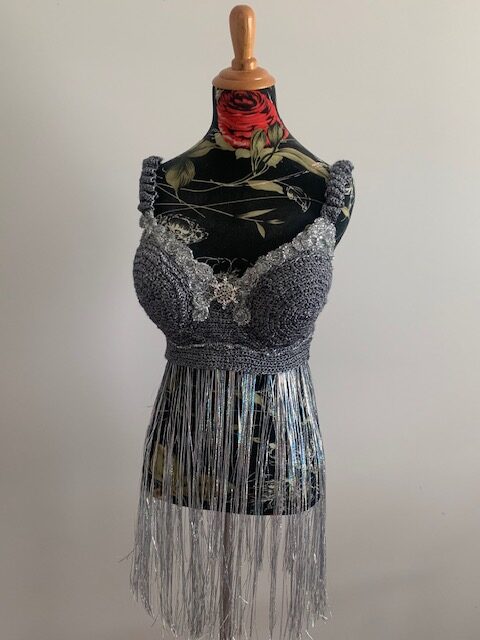
Tinsel Teats
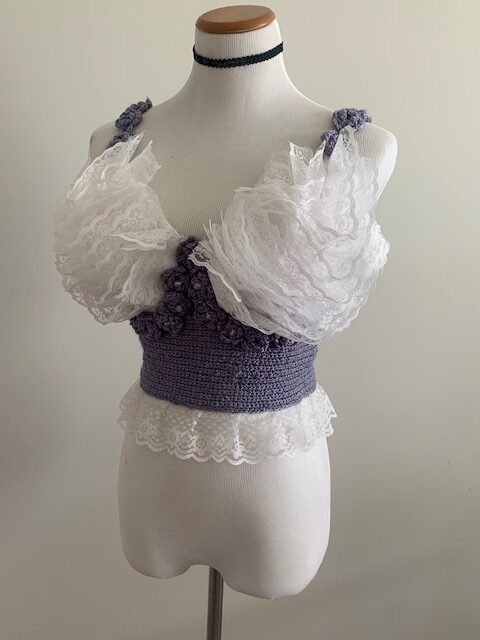
The Girls
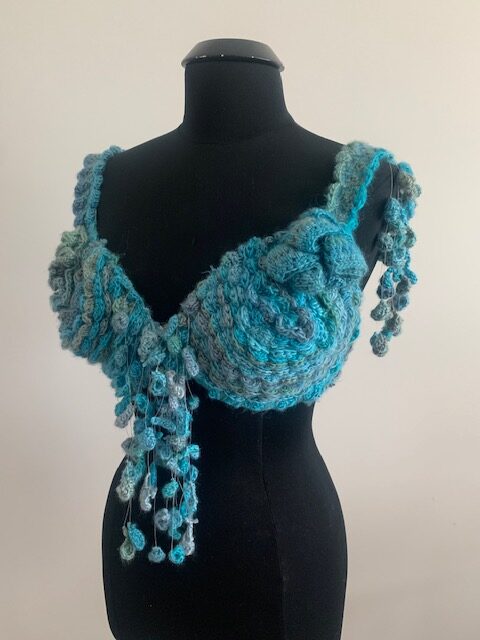
Tears for Ta-tas
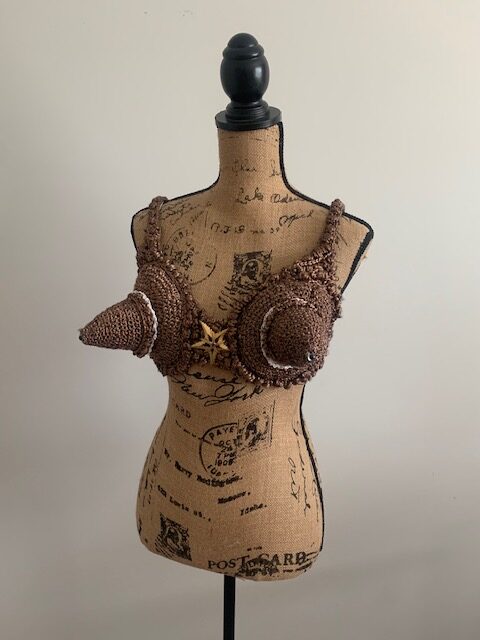
Pointer Sisters
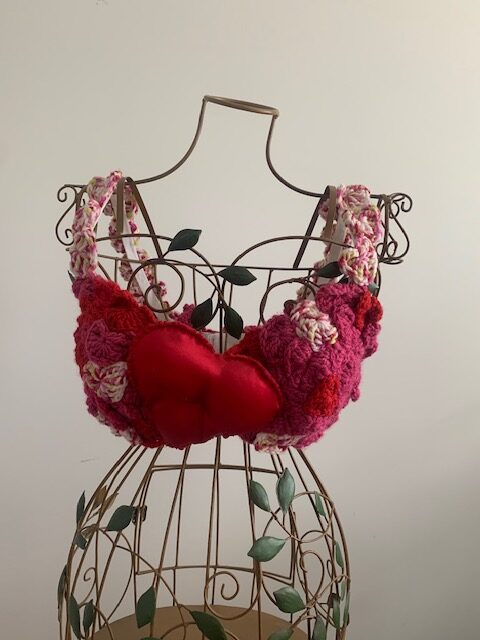
Heart Huggers
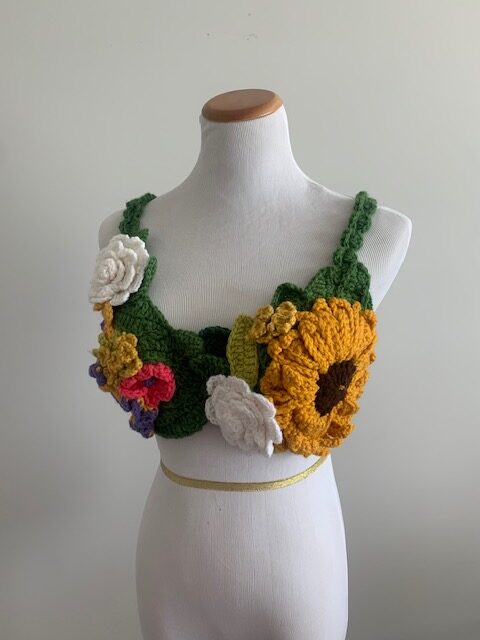
Blooming Bosom
About the artists
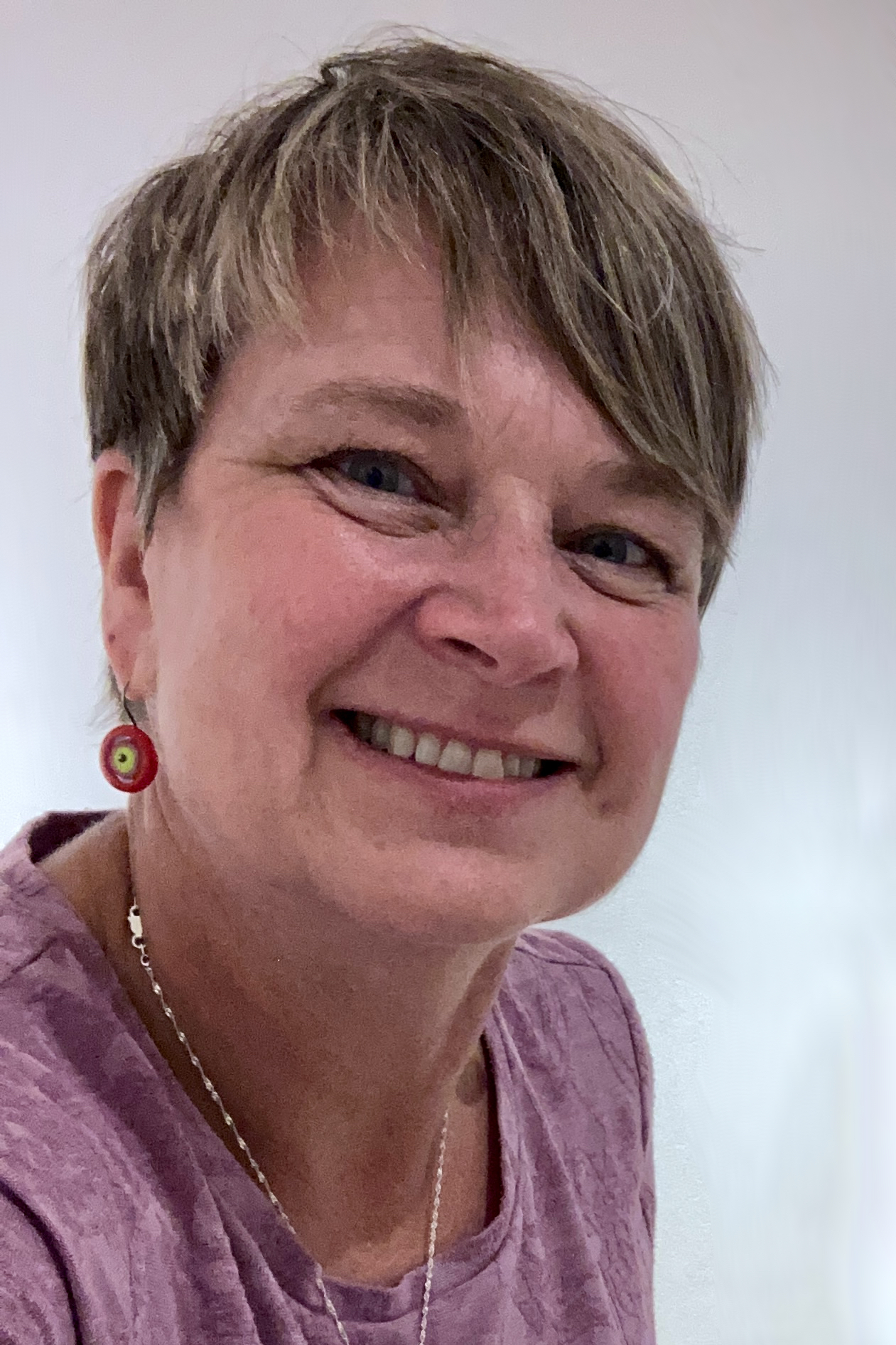
Dori Settles
Dori Settles, a native of southeastern Wisconsin, discovered her passion for the arts at a young age through piano lessons and children’s art classes. During high school, she encountered American Sign Language (ASL) while watching the movie, Children of a Lesser God. Her appreciation for ASL led her to become a certified sign language interpreter. Her experience as an interpreter plays a large role in her view of the world. Working in diverse settings with individuals of varying backgrounds, including the Deaf-Blind community, Settles developed a profound appreciation for the spatial and tactile elements of her surroundings. This heightened awareness extends to her deep connection with nature.
Driven by her fascination with the intricate aesthetics and technical aspects of glass art, Settles has consistently pursued workshops to refine her skills and techniques in lampworking, glass fusion, kiln-casting, and pâte de verre. Pâte de verre remains the primary technique in her artistic practice. Today, Settles draws immense inspiration from the forest surrounding her home and studio in the mountains of North Carolina. When she’s not immersed in her creative endeavors, she delights in spending quality time with friends, exploring the wonders of her new home state, and actively volunteering in her community.
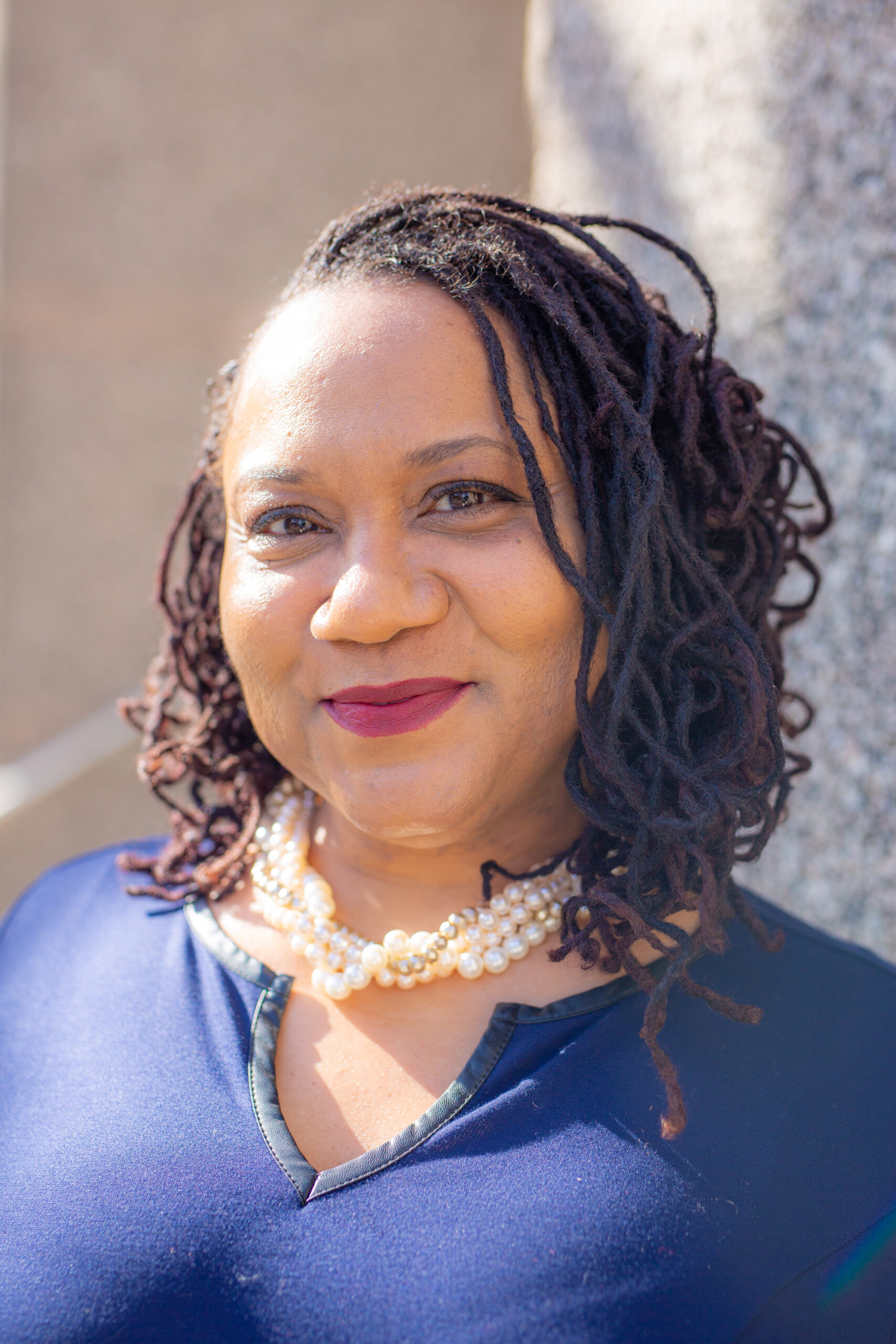
Dr. Portia Marie York
Charlotte based fiber artist, Dr. Portia Marie York, has been honing her skills in crochet by exploring identity, well-being, and the convergence of math since 2009. Originally from the inner city of Boston, she learned to crochet at the age of 10 at a youth summer camp. Dr. York is the Founder and Creative Educator of York Creative Education Group and a professor at Lenoir-Rhyne University. Previously she taught at the University of North Carolina, Charlotte. Dr. York holds a Ph.D. in Curriculum and Instruction, Urban Education, a Master of Business Management, and a Master of Advanced Crochet Stitches and Techniques certification. Her practice centers on innovative fiber arts workshops and curricula, emphasizing the creative and well-being benefits of crochet.
Dr. York’s research focuses on merging math education with crochet art to support Black girls in STEM/STEAM. She draws her creative energy from a rich tapestry of influences, including the cultural and identity-driven works of artists such as Xenobia Bailey, Jo Hamilton, Nick Cave, Toshiko Macadam, and Bisa Butler. She focuses on images, shapes, textures, and patterns, often drawing inspiration from mathematical concepts. Her creative process begins with a dive into personal and societal matters, which gradually evolve into visual narratives meticulously crafted over months of steadfast crochet sessions. Dr. York has taught crochet to youth and adults in Charlotte, Santa Fe, Atlanta, Boston, Roanoke, Las Vegas, Haiti, Guatemala, and the Bahamas to express that crocheting is therapeutic, and draws on both the analytical and creative sides of the brain. Her work, a testament to her artistic commitment, exhibits regionally where her pieces and collections engage audiences with their dynamic presence.
Additional resources
Dori Settles: https://dorisettles.com/
https://www.instagram.com/funkydoriart/
https://haywoodarts.org/artist/dori-settles/
https://artzipper.com/artists/dori-settles
Portia Marie York: https://www.portiamarieyork.com/
https://www.linkedin.com/in/portiamyork/
https://www.instagram.com/portiamarieyork/

